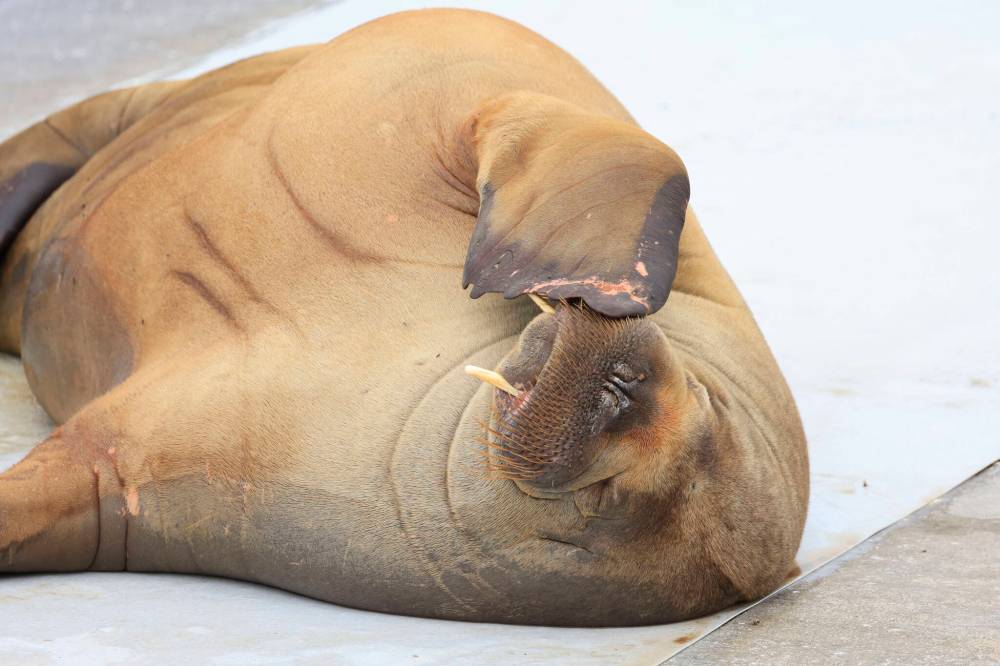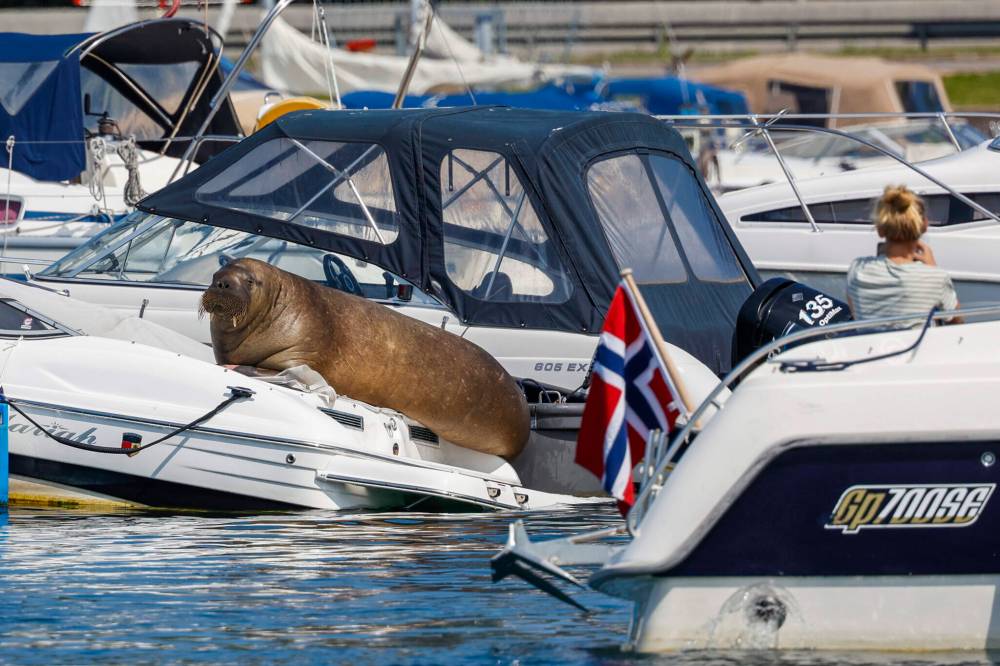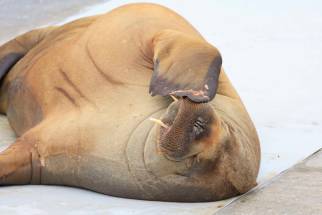Freya the walrus euthanized because we wouldn’t leave her alone
Read this article for free:
or
Already have an account? Log in here »
To continue reading, please subscribe:
Monthly Digital Subscription
$0 for the first 4 weeks*
- Enjoy unlimited reading on winnipegfreepress.com
- Read the E-Edition, our digital replica newspaper
- Access News Break, our award-winning app
- Play interactive puzzles
*No charge for 4 weeks then price increases to the regular rate of $19.00 plus GST every four weeks. Offer available to new and qualified returning subscribers only. Cancel any time.
Monthly Digital Subscription
$4.75/week*
- Enjoy unlimited reading on winnipegfreepress.com
- Read the E-Edition, our digital replica newspaper
- Access News Break, our award-winning app
- Play interactive puzzles
*Billed as $19 plus GST every four weeks. Cancel any time.
To continue reading, please subscribe:
Add Free Press access to your Brandon Sun subscription for only an additional
$1 for the first 4 weeks*
*Your next subscription payment will increase by $1.00 and you will be charged $16.99 plus GST for four weeks. After four weeks, your payment will increase to $23.99 plus GST every four weeks.
Read unlimited articles for free today:
or
Already have an account? Log in here »
Hey there, time traveller!
This article was published 15/08/2022 (1209 days ago), so information in it may no longer be current.
Like many people, my heart was recently stolen by a charming 600-kilogram (or 1320-pound) walrus nicknamed Freya.
Over the past few weeks, Freya has been frequenting the Oslo Fjord, an inlet on Norway’s southeastern coast, where she could be seen hoisting her impressive body onto docked boats to lounge in the sun, sometimes sinking them in the process.
Naturally, images of this sunbathing goddess, retiring on pleasure watercraft partially submerged by her heft, went viral online, and Freya started drawing physical crowds to the Oslo Fjord.
This quickly became a problem. Freya, like all walruses, needed a lot of rest (up to 20 hours a day) and to be left alone — girl, same — but people didn’t leave her alone. People took pictures of and with her. Some people threw things at her to get her attention. Some people were even seen swimming with her.
This story has an incredibly tragic — and avoidable — ending. On Sunday, Freya was euthanized.

“The decision to euthanize the walrus was made based on an overall assessment of the continued threat to human safety,” Frank Bakke-Jensen, head of Norway’s fisheries directorate, said in press release. The release went on to say that other solutions, including relocation, were considered but ultimately found to be “not a viable option.”
What makes her death particularly crushing is that people were, in fact, repeatedly warned that this would be Freya’s fate if they kept stressing her out by not keeping their distance. In fact, Norwegian authorities were planning to let the walrus do her thing since she was feeding, resting, and looked to be in good condition. However, that was also contingent on the public doing their part and keeping their distance from her.
But the public disregarded those warnings, and now, Freya is dead.
This is not the first time humans have endangered both themselves and wildlife by getting too close, with the animal ultimately paying the price. In 2019, a friendly black bear was euthanized in Oregon after it became too familiar with people who were feeding it and taking selfies with it.
Outrage about Freya’s death was swift, directed at both Norwegian officials who made the call to euthanize, and the public who kept harassing her.
People were certainly familiar with Freya; I was literally teary-eyed when I read the news on Sunday and I know I’m not the only one. Outrage about Freya’s death was swift, directed at both Norwegian officials who made the call to euthanize, and the public who kept harassing her.
Freya became a risk for the same reasons she became a sensation — and the same reasons that so many are mourning her death. She was given a name, after the Norse goddess of love and beauty. She seemed friendly, or at least not afraid of humans, which isn’t necessarily the same thing. She had a personality projected onto her, with people talking about Freya’s “hot girl summer.” (I did this, too, I recognize: to me, Freya will always a majestic boat-loving queen.)
All of those things delighted us and made us care about her, but it’s possible that all that over-familiarity also sealed her fate. Perhaps it made people think of her like a pet or a zoo attraction, not a wild animal to keep one’s distance from, emboldening them to get too close, too often. Even calling her ‘Freya the Walrus’ makes her sound like a Beanie Baby, not a 600-kilogram wild animal who might pose a safety risk to humans if stressed or provoked.

In a Facebook post, Rune Aae, a researcher at the University of South-Eastern Norway who has been tracking Freya, called Norway’s decision to euthanize her hasty — “and another example of a trigger-happy gun management, for which Norway is already well known.” Especially since, as he points out, school holidays are about to end, which would have cut down the number of looky-loos considerably, and Freya, who has been roaming the North Sea for two years, probably would have moved on shortly anyway.
Throwing things at an animal or crowding them so you can get a photo is horrible, arrogant behaviour, and her death is the tragic outcome. Instead of having Freya pay with her life, perhaps Norway could have fined the humans who decided that their photos and encounters were more important than the fate of a beautiful, innocent mammal who didn’t deserve any of this.
RIP, Freya. If I owned a boat, I would have let you sink it, undisturbed.
jen.zoratti@winnipegfreepress.com
Twitter: @JenZoratti

Jen Zoratti is a Winnipeg Free Press columnist and author of the newsletter, NEXT, a weekly look towards a post-pandemic future.
Our newsroom depends on a growing audience of readers to power our journalism. If you are not a paid reader, please consider becoming a subscriber.
Our newsroom depends on its audience of readers to power our journalism. Thank you for your support.






